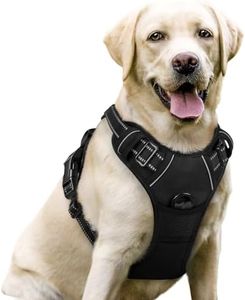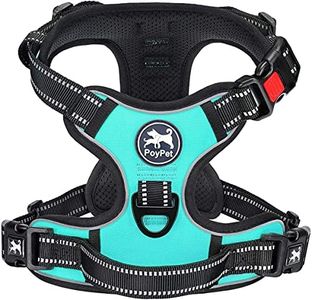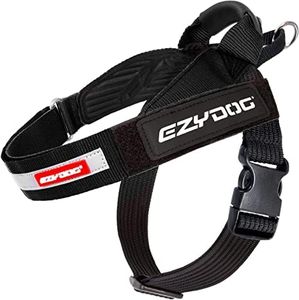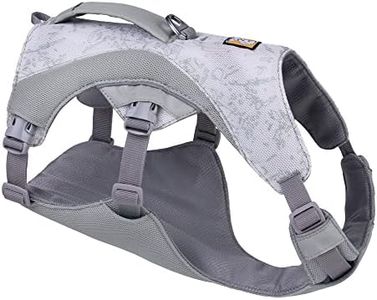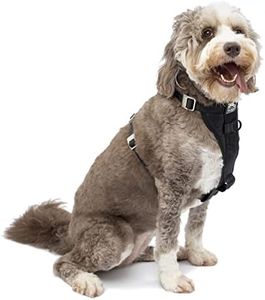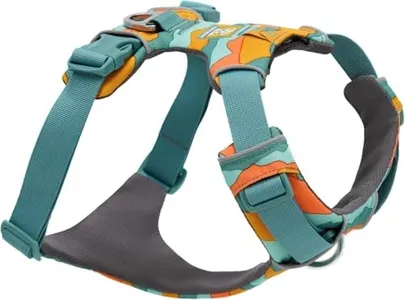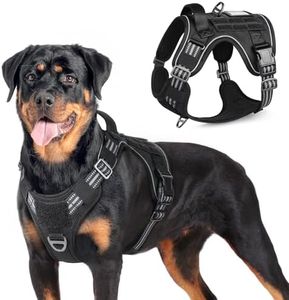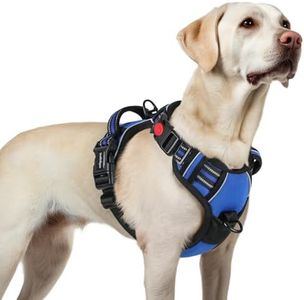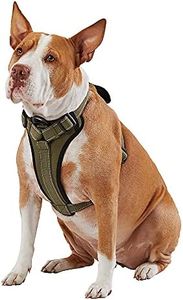We Use CookiesWe use cookies to enhance the security, performance,
functionality and for analytical and promotional activities. By continuing to browse this site you
are agreeing to our privacy policy
10 Best Large Dog Harnesses
From leading brands and best sellers available on the web.Buying Guide for the Best Large Dog Harnesses
When shopping for a large dog harness, it's important to focus on your dog's comfort, safety, and your own ease of use. Large dog harnesses need to be sturdy enough to handle the strength and weight of bigger breeds, while also being comfortable for your pet to wear for various activities, like walks, training sessions, or car rides. Understanding the main features and what they mean for your situation will help you make a smart choice.Size and AdjustabilitySize and adjustability refer to how well the harness can fit your dog's body. It's important because a harness that's too loose can slip off, while one that's too tight can cause discomfort or even injury. Most harnesses come with size charts based on chest girth and sometimes neck measurements, so you'll need to measure your dog accurately. Adjustability means the harness has straps or buckles that you can tighten or loosen to fine-tune the fit. For large dogs, look for harnesses that offer several adjustment points so you can create a secure and comfortable fit as your dog moves or grows.
Material QualityMaterial quality describes what the harness is made from and how durable it is. This is crucial for large dogs, as they tend to be stronger and put more strain on the harness. Look for harnesses made from thick, sturdy materials like nylon, polyester, or leather, often with padded areas for added comfort. Breathable fabrics are great for warm climates, and easy-to-clean materials help keep everything hygienic. If your dog is very active or enjoys rough play, higher durability will be especially important.
Closure and Fastening SystemThe closure and fastening system includes the types of buckles, clips, and Velcro that keep the harness on your dog. This spec matters because a secure harness prevents escapes and ensures your dog's safety. Large dogs benefit from heavy-duty buckles (often made of metal or reinforced plastic) that won't break under pulling force. Harnesses with quick-release buckles can make it easier to put on and take off, which is helpful if your dog is wiggly or impatient.
Leash Attachment PointsLeash attachment points are the rings or loops where you clip your leash. They can be on the back (top-mounted), the front (chest-mounted), or both. Back attachments are common and are best for everyday walking, while front attachments help with training dogs that pull, as they gently steer the dog back toward you. Some harnesses offer both options for versatility. Think about how much control you need—if your dog pulls a lot or needs training, a harness with a front ring is a better choice.
Padding and Comfort FeaturesPadding and comfort features are designed to keep your dog happy while wearing the harness, by reducing rubbing and pressure points. For large dogs, padding in key areas like the chest, belly, and shoulders is important, especially if your dog will wear the harness for long periods or during exercise. If your dog has sensitive skin or gets chafed easily, look for harnesses that specify soft padding and smooth seams.
Reflective Elements and VisibilityReflective elements and visibility features are important for walks at dawn, dusk, or night. These include strips or stitching that shine when hit by light, helping drivers and cyclists see your dog. If you often walk in low-light environments, choosing a harness with these features adds a safety layer for you and your pet.
Handle or Control FeaturesA handle or other control feature is a loop on top of the harness that allows you to grab your dog quickly, guide them through obstacles, or help them into cars. For large dogs, a strong, well-attached handle makes a big difference if you ever need extra control, such as in crowded areas or during training. If your dog is still learning or if you frequently need to manage them closely, this feature will be very useful.

